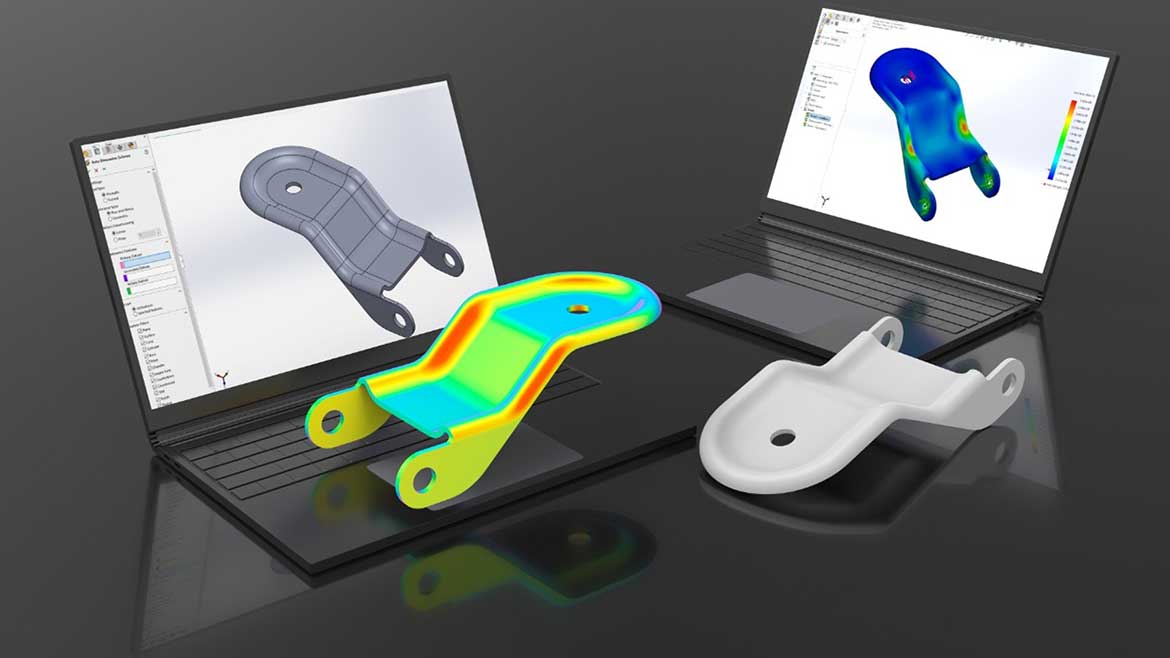The construction process commences with the conceptual design, followed by structural modeling. The efficiency and robustness of the structural model or design require load analysis, stress analysis, and feasibility study. Introducing Finite element analysis (FEA) at this stage of the construction design process helps get insight and information about the complex design, improper design techniques, and system failure at the early design stage. FEA measures the impact of various conditions, stress, vibration, fatigue, and heat on a design to minimize future risk. Sivani Engineering Services (SES) is a leading engineering services provider and a pioneer in structural and mechanical engineering services. Our FEA experts and quality analysts are well-equipped with the latest technical know-how and FEA tools for structural validation. We bring a visually appealing yet strong structure with our FEA services.
Combined with a handful of model sentence structures, to generate Lorem Ipsum which looks reasonable. The generated Lorem Ipsum is therefore always free from repetition, injected humor procure him some great pleasure.
What Is Finite Element Analysis and Its Significance in Construction
Finite element analysis is a crucial step of structural engineering. It is the method of predicting potential design issues through structural analysis. It reduces dependency on physical prototypes and experiments to understand how a designed structure will react in real-world conditions.
FEA tests a structural design under various real-world internal and external influences. Such as stress, vibrations, temperatures, natural disasters, etc., for design optimization. FEA tools develop computerized simulations of these physical conditions and mathematically calculate how the design reacts to these modeled stresses.
For example, during constructing Burj Khalifa, the architects and engineers used FEA to analyze its structural behavior and oscillation caused at its highest point due to wind loads. It helped them develop a specific shape to reduce the calculated oscillations due to wind loads.
How to Carry Out Finite Element Analysis
The finite element method helps in structural analysis once structural design develops. FEA helps understand the structural behavior and compute its response on static & dynamic loading situations, heat transfer and thermal deflections, stress, and fatigue.
For example, while designing a bridge, we need to consider a dozen possible situations and external & internal influences such as compression, tension, oscillation, wind, rain, withstanding years of temperature, and heat. Here simple mathematical calculation will not work. FEA comes into play at this stage of structural design, overcomes the design inefficiencies through redesigning and further calculations.
Finite element analysis requires a leading mathematical method using highly variable equations to measure complex situations. The method is known as the Finite Element Method (FEM). We can divide the FEM simulation process into three phases.
Pre-Process
The steps included in pre-process are
- Modeling – We need to understand why we want to model a particular part. It will help us to remove unnecessary features from the geometry. Our computational time will reduce and complexity reduced.
- Defining material properties – Define material properties based on the type of analysis such as vibration, oscillation, fatigue, etc. FE tool includes a material library from which we can choose the material required for simulation.
- Defining external loads – Define the external loads acting on the modeled part and the body force due to the weight of the component.
- Meshing – Meshing is the process of fragmenting the 3D structure into several pieces, called finite elements. Finite elements are a series of easily analyzable mathematical points. The software helps to understand these finite elements and applications.
Process
The steps included in pre-process are
- Boundary Conditions – Boundary conditions are the initial conditions before starting analysis to reduce complexity. For example, if a user is aware of the displacement of a point in geometry before beginning the analysis process, it is considered, initial value problem.
- Solution – The partial differential equations get converted to algebraic notations. And are represented in matrices. Matrices of individual elements assembled to global matrices for entire geometry and then solved for unknown variables.
Post-process
After completing the solution, FEM software indicates and presents the calculated variables such as displacement, stress, etc., in the form of contour graphs.
Benefits of FEA towards Design Modification and Optimization
FEA brings tremendous value in structural design, its modification, and optimization. Some of the benefits are listed below:
- Static structural analysis to ensure safety – static structural analysis ensures if a designed structure can withstand loads and stresses to which it is exposed.
- Prevents structural failure with dynamic analysis – FEA helps prevent structural failures by analyzing if it can survive the external shocks or impacts caused by wind, rain, natural calamities, etc.
- Nonlinear calculations lead to proper structural behavior analysis – FEA enables nonlinear calculations related to geometry, material behavior, and boundary conditions for a proper structural behavior assessment.
- Local checks for steel connection design – FEA tools can perform local checks of steel connection design to evaluate its strength and rigidity.
- Structural analysis for various materials – FEA can perform structural analysis for several materials like structural steel, reinforced concrete, timber, and glass.
Let the Structural Engineering Experts Assist You with FEA
Sivani Engineering is a leading industry in providing structural engineering, mechanical engineering, and steel detailing services. SES’s years of experience in FEA consulting and access to advanced FEA tools help it solve complex structural analysis challenges. Our Structural engineering experts hold excellence in analyzing structural design flaws and suggest appropriate design optimization changes. Contact us to get a competent and quality FEA service.

